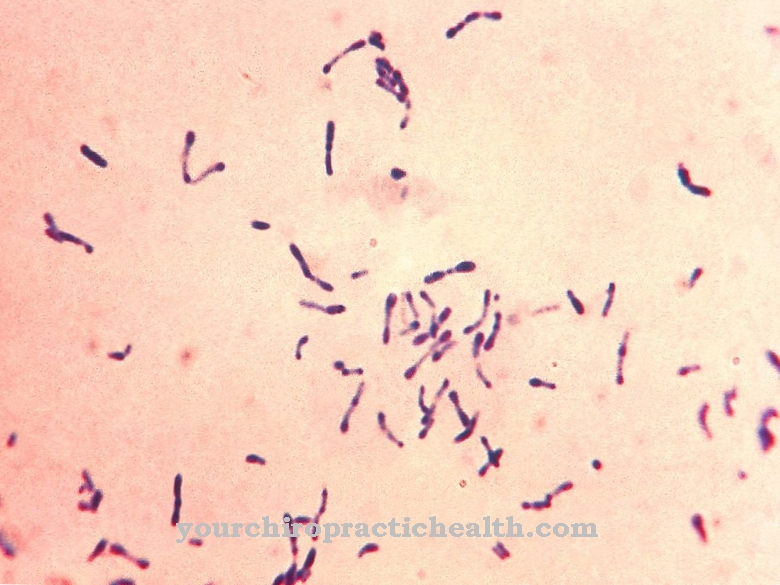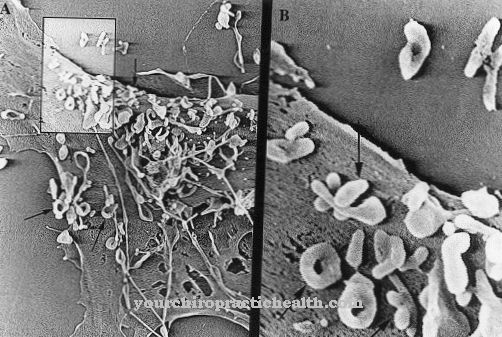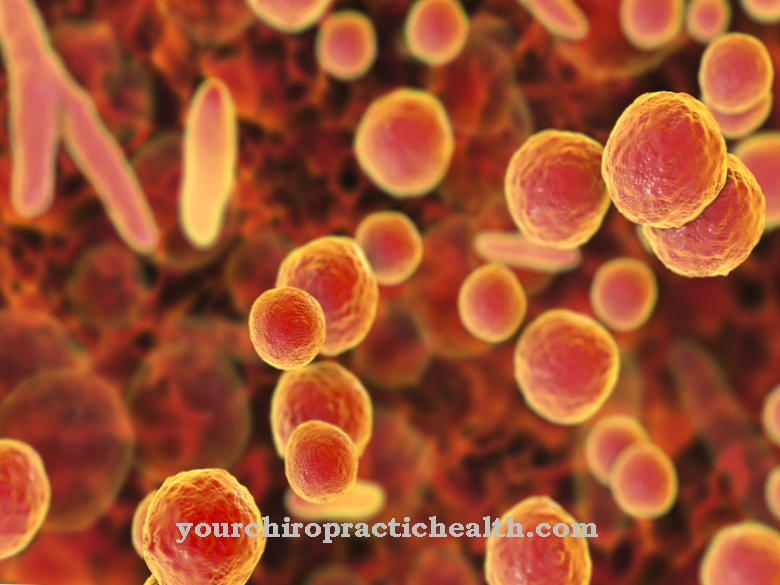The bacterium Salmonella Typhi causes the infectious disease typhoid. It is a pathogenic enterobacterium that is very likely to cause disease. An infectious dose of 100 to 1000 pathogens is already sufficient. The disease rate increases with the number of pathogens. The infection comes about primarily through humans.
What is Salmonella Typhi?
Salmonella Typhi is a pathogenic bacterium. It can be transmitted by people who are already sick or so-called permanent eliminators. These are sick people in whom the bacterium can be detected for at least ten weeks. Typhoid fever can also be triggered by the consumption of contaminated foods such as fertilized fruit and vegetables, mussels and oysters. Unclean water and fly droppings are also possible carriers.
Salmonella Typhi only affects humans and has an incubation period of seven to twenty days. An infection with this pathogen must be reported. If it is ingested with food, the bacterium enters the bloodstream via the lymphatic system. Typhus can migrate into all organs (systemic disease). If typhoid is not treated, the disease is very dangerous and can be fatal.
Occurrence, Distribution & Properties
Salmonella Typhi belongs to the rod-shaped bacterial genus Salmonella and there in turn to the family of enterobacteria. Salmonella are often actively mobile and usually do not form spores. Their distribution is worldwide. Many types of Salmonella also occur in animals that are cold and of the same temperature as well as in special habitats far from living beings. Very often the infection occurs through contaminated or stale water and food.
Salmonella are particularly common in eggs and poultry meat. Diseases that are caused by salmonella (salmonellosis) are generally notifiable in Germany. The number of cases has decreased significantly in the past decades. It is estimated that one in five people in Germany is a carrier of salmonella. Worldwide, the number of typhus cases is given as around 16 million annually. Almost exclusively people in developing countries are affected. In this context, it is assumed that around 500,000 deaths per year.
Salmonella can survive for several weeks under relatively extreme conditions. They can be detected in dried excrement for more than two and a half years. Only strong sunlight and great heat can lead to their death. Heating food to 75 ° C for at least ten minutes can prevent Salmonella infections relatively safely. Freezing food does not generally kill the bacteria. Suitable disinfectants can in turn destroy the pathogens in a few minutes.
Salmonella Typhi is common in both temperate and subtropical areas.It is estimated that ten percent of the untreated patients remain permanent eliminators for a long time. They carry away typhoid pathogens with the stool or urine evacuation for up to three months. This can even happen for more than a year if the bacteria persist in the gallbladder and biliary tract. The existence of gallstones can further promote this permanent excretion. Many of the permanent eliminators do not show the typical symptoms, but can infect other people very easily.
Illnesses & ailments
In the first week of typhoid fever, the so-called stage incrementi, headache, nausea and fever occur. This can rise to a value of 41 ° C. The heartbeat can drop to less than 60 beats per minute (bradycardia). The number of white blood cells (leukocytes) in the blood may drop well below normal. Often there is also constipation. Defecation occurs less frequently during this time.
In the subsequent acmes stage (2nd to 3rd week), the pathogen reaches other organs via the bloodstream. For example, the spleen can enlarge (splenomegaly). The small-spotted, red roseoles form on the skin, and the characteristic, swelling typhomas in the intestines.
Salmonella Typhi can then be detected in the stool. During this phase, the fever moves steadily at around 40 ° C. The frequency of bowel movements increases significantly, the consistency becomes mushy. The patient feels a permanent drowsiness.
The decrementi stage follows in the 4th to 5th week, when the symptoms of the disease usually decrease. However, bleeding in the digestive tract and severe inflammation of the peritoneum are possible, which require decisive medical attention.
Typhoid infections are usually treated with antibiotics. For this purpose, samples of stool and blood samples are evaluated in order to rule out resistance of the pathogen to the antibiotic agents commonly used. The best prophylaxis against Salmonella Typhi is attentive and thorough hygiene.
It is advisable to strictly refrain from questionably prepared food and tap water on every trip to tropical and subtropical areas. Vaccination programs against typhus have been tried and tested for decades and are implemented with both live and dead vaccines. Salmonella Typhi bacteria are used for the live vaccine, which have a non-pathogenic effect and stimulate the immune system to produce antibodies. The product is well tolerated and provides effective protection in endemic areas for about a year. For repeated trips, a booster vaccination is recommended after one year. In most cases, the inactivated vaccine consists of a polysaccharide, which also controls antibody formation. Protection against typhus can even be expected here for three years.
























.jpg)


